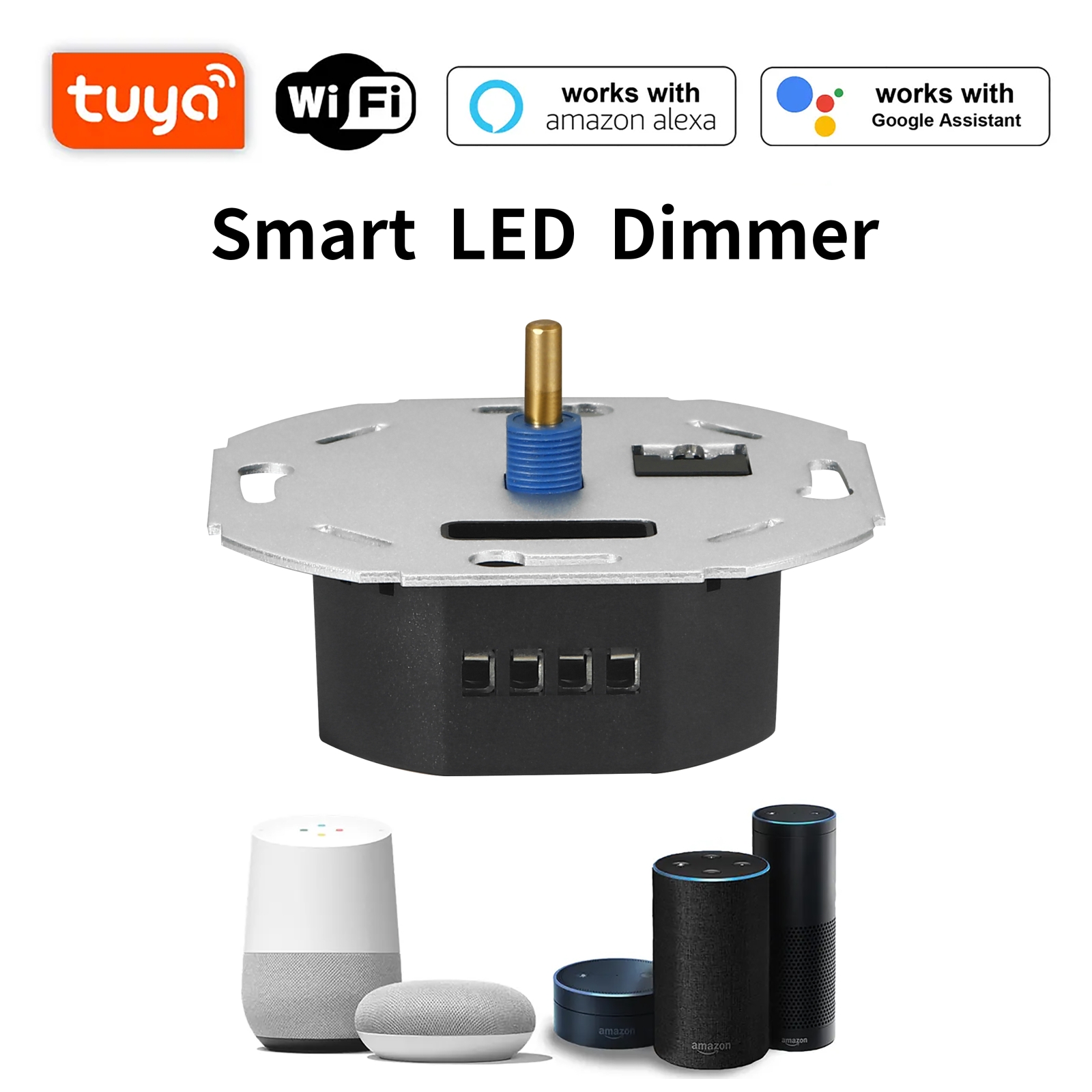Illuminating the World of LED Dimmer Switches: A Comprehensive Guide to Enhanced Lighting Control
Author:Admin Publish time: August 9, 2023 Origin: Site
LED (light emitting diode) lighting is at least 80% more energy efficient than incandescent options. But too much light results in sleep deprivation, high electricity bills, and energy inefficiency.
LED dimmer switches provide control over light fixtures, allowing you to adjust their output. They are incredibly popular modern lighting solutions for households and commercial establishments.
How do they work? What are the benefits of dimming LED lights? What are the best practices for their installation? Read on for all you need to know.
Understanding LED Dimmer Switches
LED dimmer switches control LED lighting. After all, you don’t need full brightness at all times of the day.
How Do LED Dimmer Switches Work?
There are two mechanisms with which LED dimmer switches work:
- Pulse-width-modulation (PWM)
- Analog
PWM LEDs
This system works in intervals, where light is either on or off. The programming is based on the amount of brightness preferred, whether it’s 10%, 50%, or 90%. At every cycle, the LED is on at 10%, 50%, or 90%. The longer it is on, the brighter it seems.
LEDs flicker in such rapid succession that it isn’t visible to the naked eye.
Analog Dimming
The analog dimming supply manages the current linearly and reduces the power to dim the LED.
One disadvantage of analog dimming is that it tends to have inconsistent coloring.
What Are the Advantages of Using LED Dimmer Switches Over Traditional Switches?
Dimmer switches are modern configurations a step ahead in terms of innovation.
There are three different types of LED dimmer switches:
- Rotary Dimmer - the most common type of dimmer switch where you simply rotate the knob to adjust brightness.
- Sliding Dimmer - simply slide the bar handle to adjust the lighting.
- Dimmer Switch - a regular toggle switch with a slider on the side to control light intensity.
The Benefits of LED Dimmer Switches
Why do you need to upgrade to LED dimmer switches?
Energy Efficiency
While dimming LED lights will not lower voltage, it can still impact utility bills. Light dimmers save energy by reducing the amount of electricity that runs through the bulb.
Extended LED Lifespan
Cost savings are not limited to electricity—dimmer switches also extend the lifespan of the LED.
Customizable Ambiance
Dimmer switches help set the mood of a space. If you are studying, you may be more productive at full LED brightness. If you have friends over for an intimate dinner party, a dim environment is more appropriate.
Types of LED Mains Dimmer Switches
Leading-Edge Dimmers
This phase-cutting dimmer cuts off the wave of the alternating current (AC) supplied by the grid. Leading-edge dimmers work at the front of a wave’s half cycle.
Leading-edge was originally used for incandescent and halogen lights, which indicate a higher load level. While it can still work with LED, the compatibility is not perfect. You will need several LED lights to meet the minimum requirement for leading-edge dimmers.
.png)
Trailing-Edge Dimmers
Trailing-edge dimmers cut out the second half of the AC’s wave’s half cycle. They enable a soft start, a silent run, and smooth control. This option is more modern and better suited for LED lighting, working nice with a minimum Load ,such as 1-2W.
But one of the disadvantages is the 50% rule when it comes to LED. Trailing-edge dimmers work well with incandescent and halogen light with equal wattage load. For example, a 300W trailing-edge dimmer can work with incandescent and halogen lamps for a total of 300W. However, with LED, it can only power about 50% of that, which is 150W(if Dimmable LED Bulb PF marks 0.5),Normally LED Dimmer switch supplier marks rated wattage in Incandescent Bulb, but for LED's Load ,need to consider Dimmable LED Bulb's PF( Power Factor),the higher PF ,means the higher LED load you can connect, if a dimmable LED bulb marks PF 0.7,then 300*0.7=210W, means 210W LED bulb load you can connect to the Trailing-edge dimmers. if a dimmable LED bulb marks PF 0.9, then 300W*0.9=270W,it is very close to Halogen max load you can connect. but be caution that the Dimmable LED bulb's PF marks are not always precise, so kindly leave more spaces for safety.
Traditional incandescent and halogen bulbs are resistive loads, meaning their electrical resistance remains relatively constant as voltage changes. This makes them more straightforward to dim. While dimmable LED bulbs use electronic drivers to regulate current and voltage. These drivers can introduce complications in dimming, such as variable loads and power factor issues. which is very different from halogen Bulb .
Choosing the Right LED Dimmer Switch
With so many different dimmer types and switches available, which would be best for your space?
Factors to Consider
Choose Trailing edge dimmer for LED bulb ,which is most importantly ,as trailing edge dimmer is designed for LED light source ,much more friendly .
Wattage
Make sure the wattage of the dimmer can accommodate the total wattage of all the bulbs attached to the switch.
For example, you have 10pcs*5W LED bulbs. The dimmer's wattage rating must be 100W or higher, normally it will marks Max load for both LED type and Halogen bulb, eg 10-200W Halogen load,2-100W for LED load.
Total Load
Calculate the total load and ensure the dimmer switch can accommodate the total number of LED bulbs you are using.
A dimmer switch with a rate of 200W to 400W can support a minimum of 20W and a maximum of 40W.
Compatibility
Make sure your LED dimmer switch is compatible with your LED fixtures:
- GU10
- G9
- MR16
- G4
Dimming Range:
Different dimmer switches offer varying dimming ranges. Some may dim LED bulbs to lower levels than others. If achieving very low light levels is important to you, check the dimmer's specifications to ensure it meets your requirements.
Dimming Techniques and Compatibility
Dimming is not a new concept. So, if you have been using dimmers for your incandescent or halogen lamps and want to shift to more energy-efficient LED lighting, correct integration is crucial.
One of the main issues is with LED’s low power output.
- Drop and Pop - the light cuts off when the LED is dimmed and suddenly becomes too bright when the light is increased.
- Gaps - a period where illumination doesn’t change even when the dimmer switch is adjusted.
- Ghosting - when the dimmer is at its lowest and should be at its darkest, but there is still a lot of light.
- Flickers - the light goes in and out.
These are signs that the LED dimmer switches are incompatible with the bulbs. Troubleshooting steps include:
- Check the label to confirm that the LED bulbs are dimmable.
- If using an older dimmer switch, make sure it is compatible with LED bulbs.
- If you are still using a leading-edge dimmer, you may have to switch to a trailing-edge dimmer, which is designed for LED lamps.
LED Dimmer Switch Installation
How do you safely install LED dimmer switches?
- Purchase dimmable LED fixtures. This feature should be stated explicitly on the product label.
- Determine how many bulbs you need and calculate the total wattage. If you need ten 5W bulbs (50W in total), make sure your LED dimmer switch has at least a 100W rating.
- Now, you are ready to install the dimmer. Turn off all the switches.
- Remove the wall plate to expose the wires.
- Take note of the ones connected to the switch and disconnect them.
- Strip the wire installation. Only use a wire stripper for this step.
- Connect the wires to the dimmer. If the new dimmer switch has pre-attached wires, use wire connectors to link them up. Wrap electrical tape around the connections.
- Put the wires back in the electrical box and screw it shut. Cover and secure the wall plate.
- You can now use your LED dimmer switches.
Professional vs DIY Installation
Unless you have an electrical background, it is ideal to call a professional to do the installation. They can handle complex installations and troubleshoot issues that crop up.
Practical Applications of LED Dimmer Switches
There are many practical ways to use LED dimmer switches and improve your space. Residential Use
Many people don’t realize the importance of having different brightness levels at home. For example, sleeping in the dark is better for you because it regulates the use of melatonin. But completely turning off bedroom lights can be a hazard when you need to walk around in the middle of the night.
Bright lights are great for studying and reading, but you may want it dimmer the rest of the day.
Different areas of the house also have different recommended lighting intensity levels:
- Living room - 60-150 lux
- Hallway - 100-150 lux
- Dining room - 150-200 lux
- Study area - 400-500 lux
- Kitchen - 150-200 lux
- Bedroom - 60-100 lux
Commercial and Hospitality Settings
Efficiency service organization SaveMoneyCutCarbon has set the following guidelines for industry lighting:
- Hotel corridor - 100 lux
- Commercial foyer - 200 lux
- Sports hall, lecture theater, library - 300 lux
- Office, laboratory, retail shop - 500 lux
- Drawing office, chain store - 750 lux
- Supermarket, electronic assembly work area, paintwork area - 1000 lux
- Precision assembly area - 1500 lux
- Space for assembly of small items and finished fabric inspection - 2000 lux
Task Lighting and Accent Lighting
With dimmable LED lighting, you can create a customizable ambiance depending on your needs and preference. Improve your productivity with maximum brightness, and relax with dim lighting at the end of each day.
Tips for Troubleshooting Dimmer Switch Issues
Common dimmer switch issues include flickering and buzzing. These are often due to incompatibility, so it is important to follow installation steps.
You must ensure that the dimmer switch and LED fixtures are compatible in terms of wattage and total load.
Smart LED Dimmer Solutions

To go all-in on lighting solutions, you can integrate smart technology. You can automate lux levels based on the time of day and your activities. These systems can be controlled via remote or voice activation.
Smart LED dimmer solutions can be integrated with the following technologies:
- Amazon Alexa
- Apple HomeKit
- Google Home
- Samsung SmartThings
Future Trends and Innovations in LED Dimmer Switches
What’s next for LED dimmer switches? You can expect innovation to make LED dimming even more convenient. The use of artificial intelligence and machine learning could have a significant impact on the LED industry and LED dimmer technology.
The rise of sustainability across all industries will only improve lighting systems in the future.
Conclusion
LED lights are already energy efficient. When you integrate LED dimmer switches, you can save even more. You can use it to customize the ambiance in your space according to your needs.
Get in touch with experts at Saco Lighting for the most efficient lighting solutions for your needs.
Sources
https://www.statista.com/topics/1144/led-lighting-in-the-us/#topicOverview
https://finolex.com/5-uses-of-dimmer-switches-you-didnt-know-of/
Bennet, J. (2023, March 31). 8 Types of Light Switches and Dimmers. BHG.com. https://www.bhg.com/home-improvement/electrical/guide-to-light-switches-and-dimmers/
Moretti, M. (2023, June 27). Sleep Science: Can Sleeping in a Dark Room Help You Live Longer? Healthnews.com. https://healthnews.com/longevity/biohacking/sleep-science-can-sleeping-in-a-dark-room-help-you-live-longer/
https://vtacblog.com/recommended-lighting-levels-for-residential-and-office-spaces/
https://www.savemoneycutcarbon.com/learn-save/brief-guide-to-lighting-levels-in-hotels/


.webp)